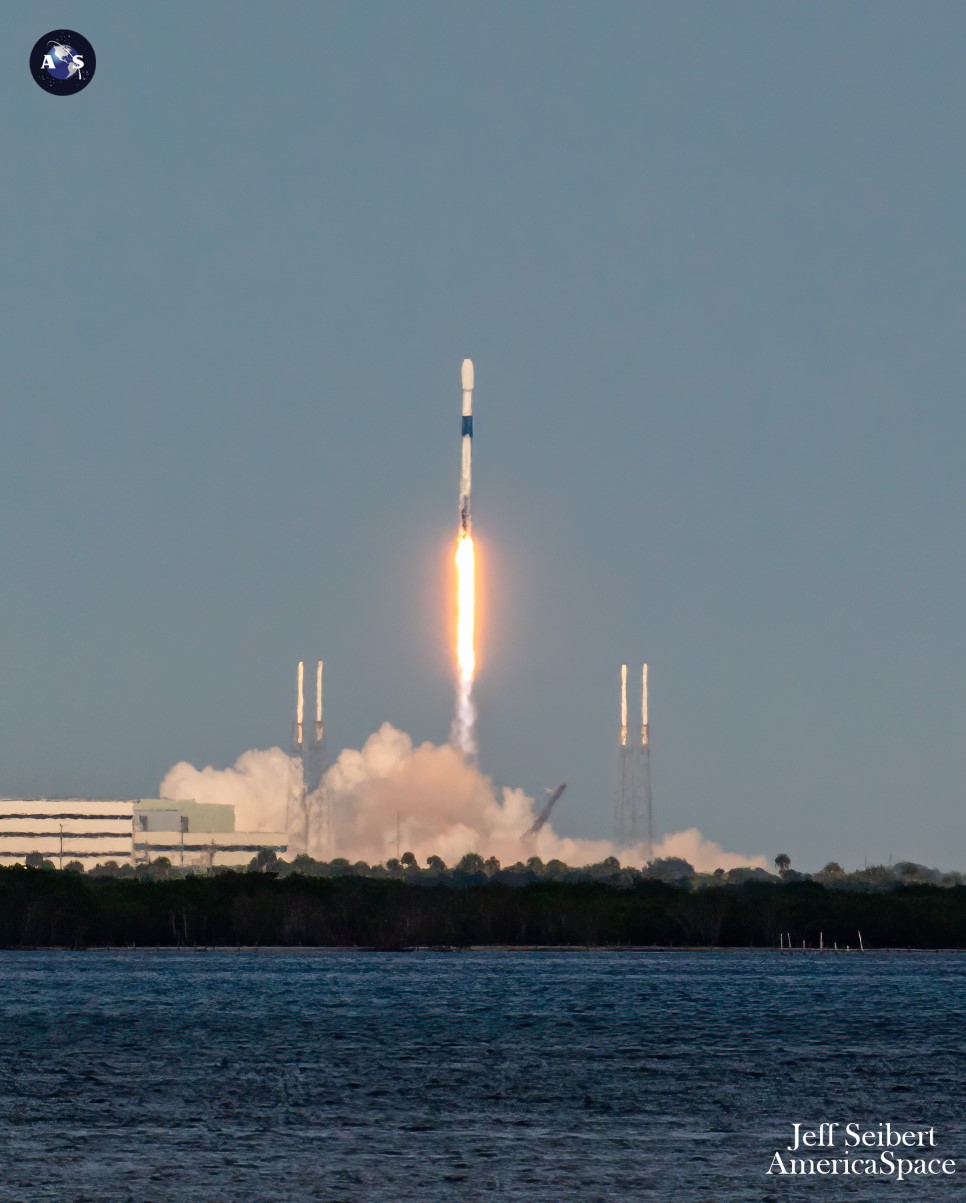
The first of two launches slated this week from the Space Coast got underway at sunset Sunday, as a 12-times-used SpaceX Falcon 9 booster took flight from storied Space Launch Complex (SLC)-40 at Cape Canaveral Space Force Station, Fla., laden with a powerful Indonesian geostationary communications satellite. Elsewhere, at the Cape’s Space Launch Complex (SLC)-37B United Launch Alliance (ULA) is readying its second-to-last Delta IV Heavy for liftoff before dawn on Wednesday for a highly classified mission on behalf of the National Reconnaissance Office.
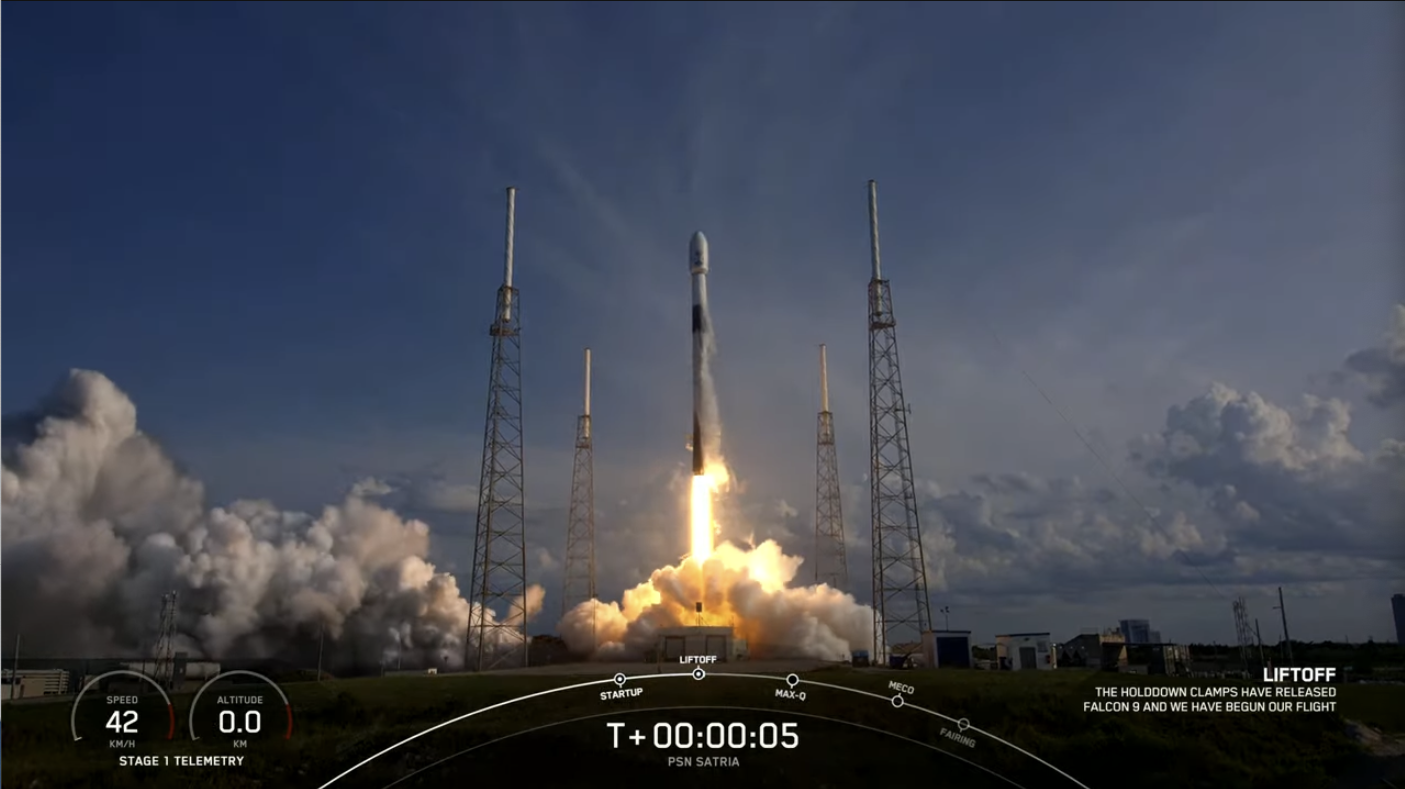
Benefiting from an expansive 178-minute “launch window”, SpaceX’s B1067 core targeted the opening of the window at 6:04 p.m. EDT Sunday. Weather conditions for the Hawthorne, Calif.-headquartered organization’s fifth flight of June proved favorable, with an above 60-percent likelihood of acceptable conditions, tempered by a “lower” risk of afternoon and evening thunderstorm coverage. But with high winds at altitude, SpaceX elected to postpone T-0 a few minutes into the window, firstly to 6:06 p.m. EDT and eventually 6:21 p.m. EDT.
And B1067 cemented her own credentials as one of the most flown members of SpaceX’s fleet. This particular bird came online in June 2021, when she lofted the CRS-22 Cargo Dragon for its month-long voyage to the International Space Station (ISS).
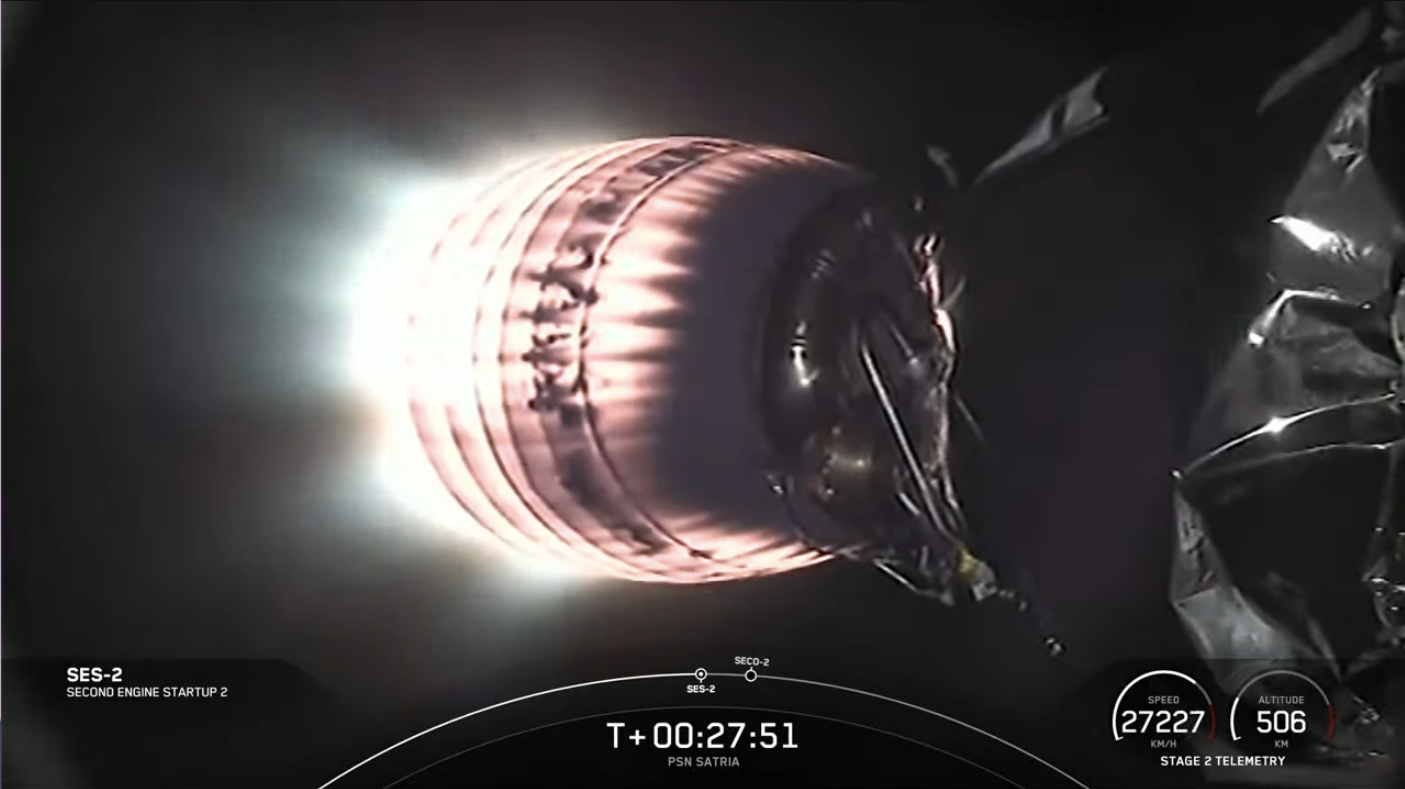
She went on to deliver eight astronauts from the United States, Germany and Italy to the station as part of the Crew-3 and Crew-4 missions in November 2021 and April 2022, followed by the CRS-25 Cargo Dragon last summer. Added to that list, she lifted a geostationary communications satellite for Turkey, a grand total of 222 Starlink low-orbiting internet communications satellites, a pair of O3b mPOWER broadband satellites and the Hotbird 13G communications satellite.
With Sunday’s launch of her 12th mission, B1067 also set her own “personal best” of only 35 days between a pair of flights. Most recently, she lofted a Starlink payload out of the SLC-40 in mid-May.
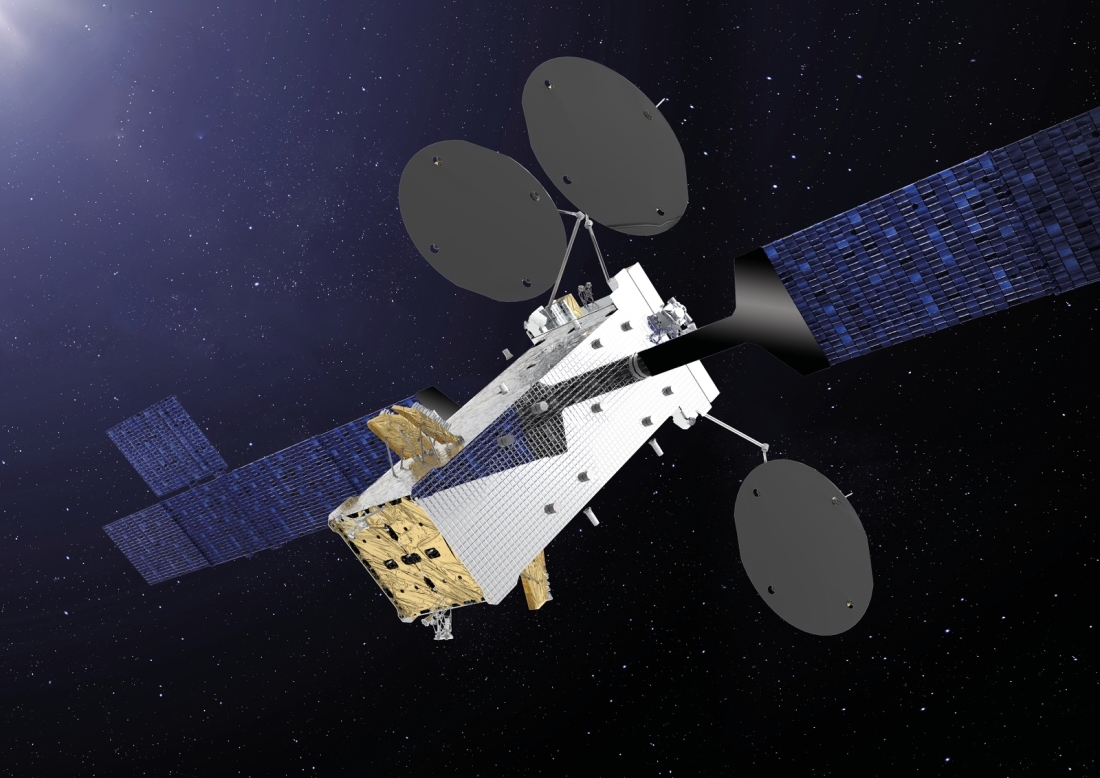
This was SpaceX’s fifth launch of June, following on the coattails of a pair of missions in the month’s opening week—including the CRS-28 Cargo Dragon to the space station—and a second pair, spaced only 14 hours apart, just last week. Primary payload was the Satria Very High Throughput Satellite (VHTS), built by Thales Alenia Space for Indonesia’s Pasifik Satelit Nusantara (PSN), which will eventually take up residence at 146 degrees East for an estimated 15-year operational lifetime.
The full-Ka-band satellite will deliver up to 150 gigabits of data, connecting over 90,000 schools, 40,000 hospitals and public buildings and is expected to substantially narrow Indonesia’s digital divide. Contracts between Indonesia’s Ministry of Communications and Information Technology and domestic satellite operator PSN selected Thales Alenia Space in July 2019 to build Satria.
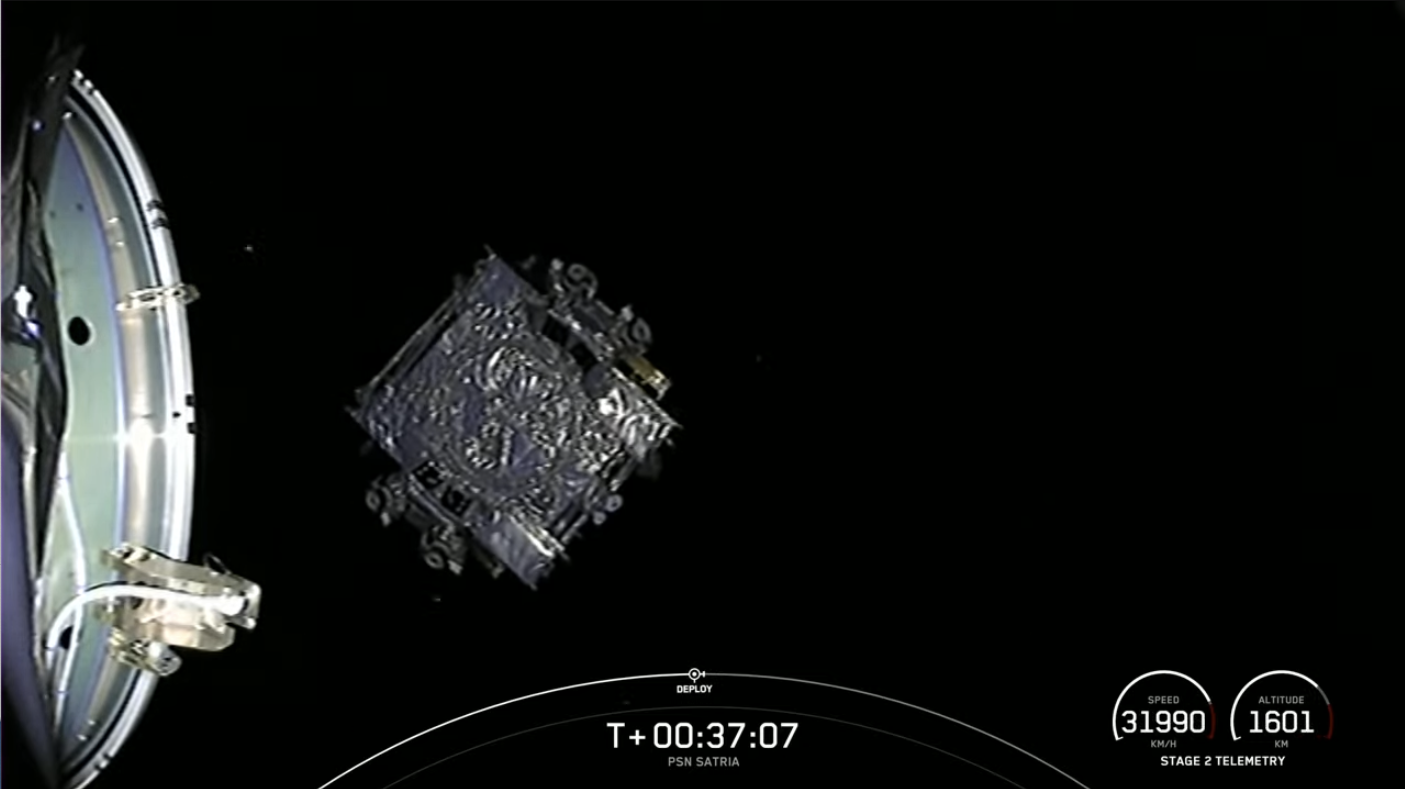
And in September 2020, as work formally began on Satria—at the very height of the worldwide COVID-19 coronavirus pandemic—SpaceX was selected the mission’s launch provider. The satellite’s payload was integrated with its main spacecraft “bus” last October in the clean room at Thales’ facilities in Cannes, France, before being delivered by sea from Nice, France, to the Cape in May.
It arrived in Florida in the final days of last month to enter pre-launch fueling and encapsulation. Satria is the second PSN satellite to be launched by the Hawthorne, Calif.-headquartered organization, following Indonesia’s participation in the co-manifested ViaSat-3 mission earlier this year.
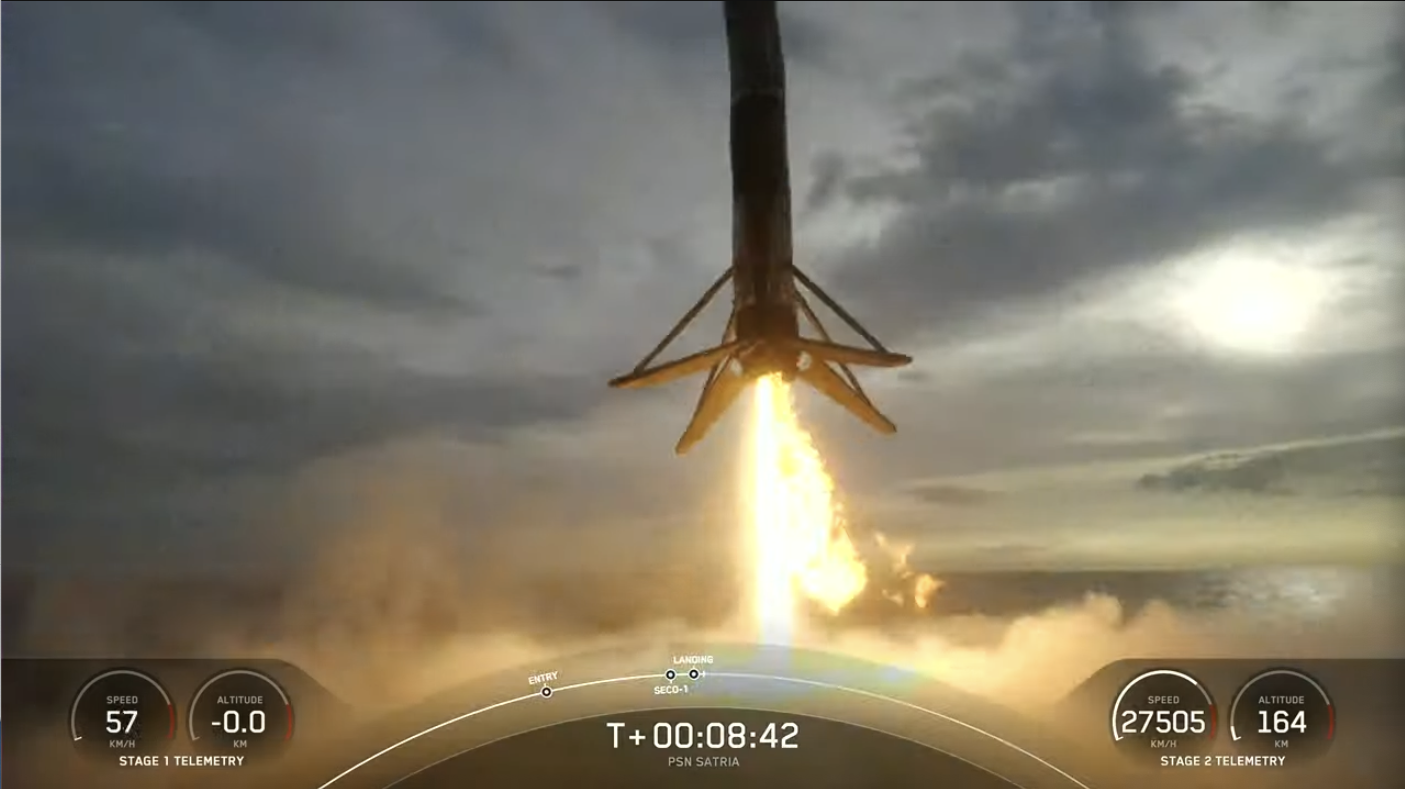
Two and a half minutes after Sunday night’s liftoff, B1067 separated from the Falcon 9 and returned to a smooth touchdown on the expansive deck of the Autonomous Spaceport Drone Ship (ASDS), “A Shortfall of Gravitas”. Alone now, the second stage went on to execute a pair of “burns” by its single Merlin 1D+ Vacuum engine—the first lasting six minutes, the second a little under a minute—before Satria was deployed at 36 minutes and 47 seconds after launch.
With this latest flight, SpaceX wraps up its eighth geostationary mission of 2023, having delivered seven commercial satellites and the U.S. Space Force’s highly classified USSF-67 payload since January. Several other geostationary customers are waiting in the wings, with the Space Force’s USSF-52 and EchoStar’s Jupiter-3 targeting launches aboard triple-barreled Falcon Heavy boosters in July and September and Intelsat’s long-awaited Galaxy 37 expected to fly next month.
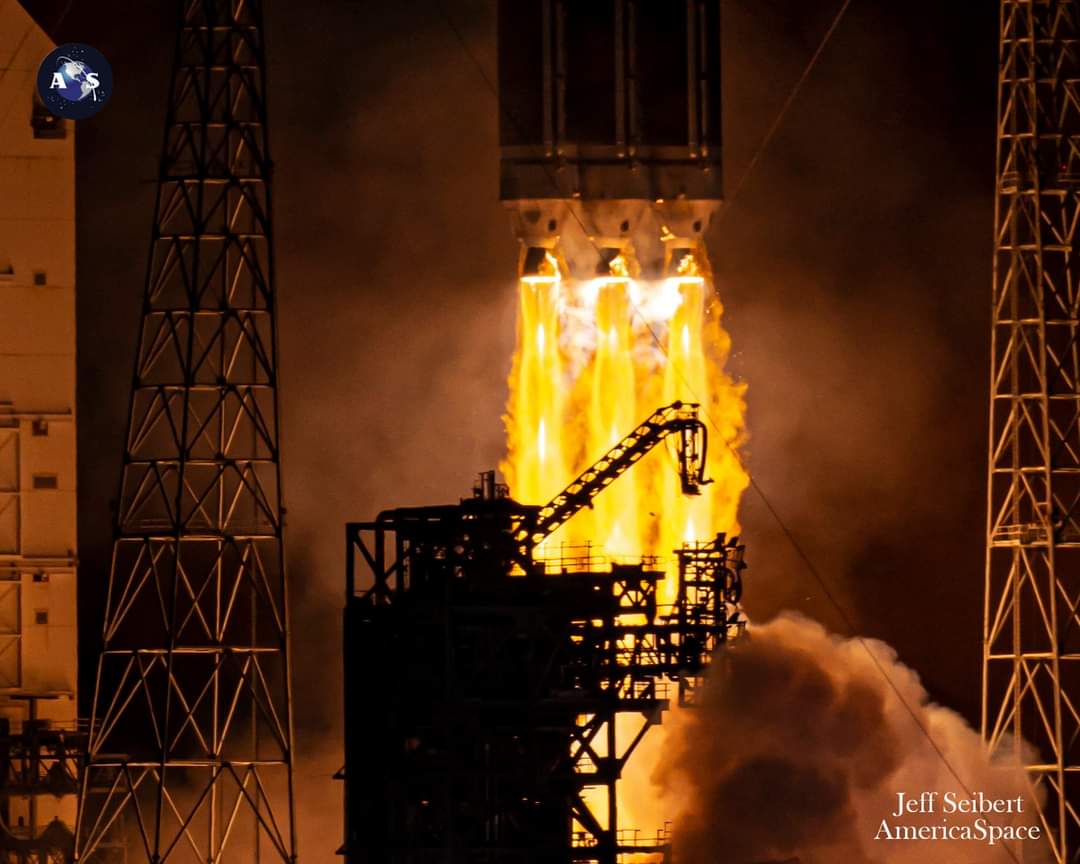
Also waiting in the wings over at the Cape’s SLC-37B is the second-to-last mission of ULA’s mighty Delta IV Heavy, laden with the classified NROL-68 payload for the National Reconnaissance Office. Delayed since the beginning of the year by technical maladies, the Heavy is set to launch at 3:29 a.m. EDT Wednesday, with weather conditions expected to be 75-percent favorable for three back-to-back flight opportunities over three successive days at the end of next week.
“An unsettled and largely stagnant weather pattern is likely to remain in place through the middle of next week, characterized by above-normal opportunities for showers and thunderstorms each day,” noted the 45th Weather Squadron at Patrick Space Force Base in a Saturday update. “While the highest threat for storms will target the afternoon and evening hours, there is an elevated risk that some storms and associated clouds may persist into the overnight hours as a series of upper-level disturbances interact with a surface boundary across northern Florida.
“A subtle shift towards a more normal regime appears to unfold during the latter portion of next week, leading to somewhat more favorable overnight launch weather,” it was added. “Given these expectations, a high threat for showers and storms exists…with remnant anvil clouds and possibly cumulus clouds potentially persisting late into the night.”
The Delta IV Heavy hardware for this mission began arriving on the Space Coast from ULA’s Decatur, Ala., facilities, early in the spring of last year. Originally targeting a launch on 20 April, the mission met with delay when teams discovered a flight valve that exhibited off-nominal behavior.
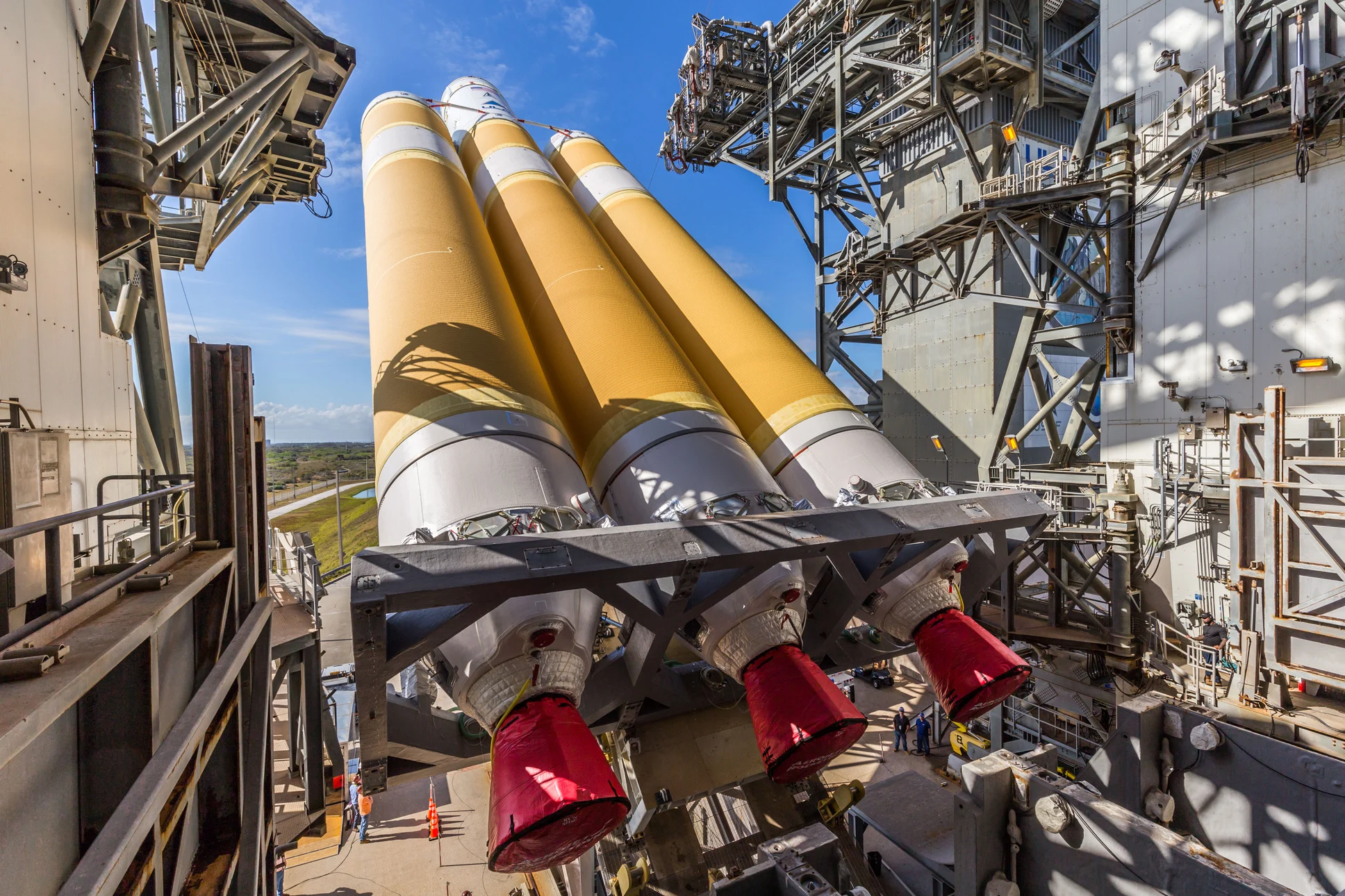
Last month, a new No Earlier Than (NET) date of 21 June was established, with a broad launch window running from 3 a.m. EDT through 7:45 a.m. EDT. In the last few days, that has been refined to a T-0 point at 3:29 a.m. EDT.
The launch of NROL-68 was contracted to ULA by the Space and Missile Systems Center (SMC) at Los Angeles Air Force Base back in September 2019, as part of a five-year, $1.18 billion modification of the existing Delta IV Heavy contract. Under its terms, five NRO missions would be delivered to orbit on the final five Delta IV Heavies.
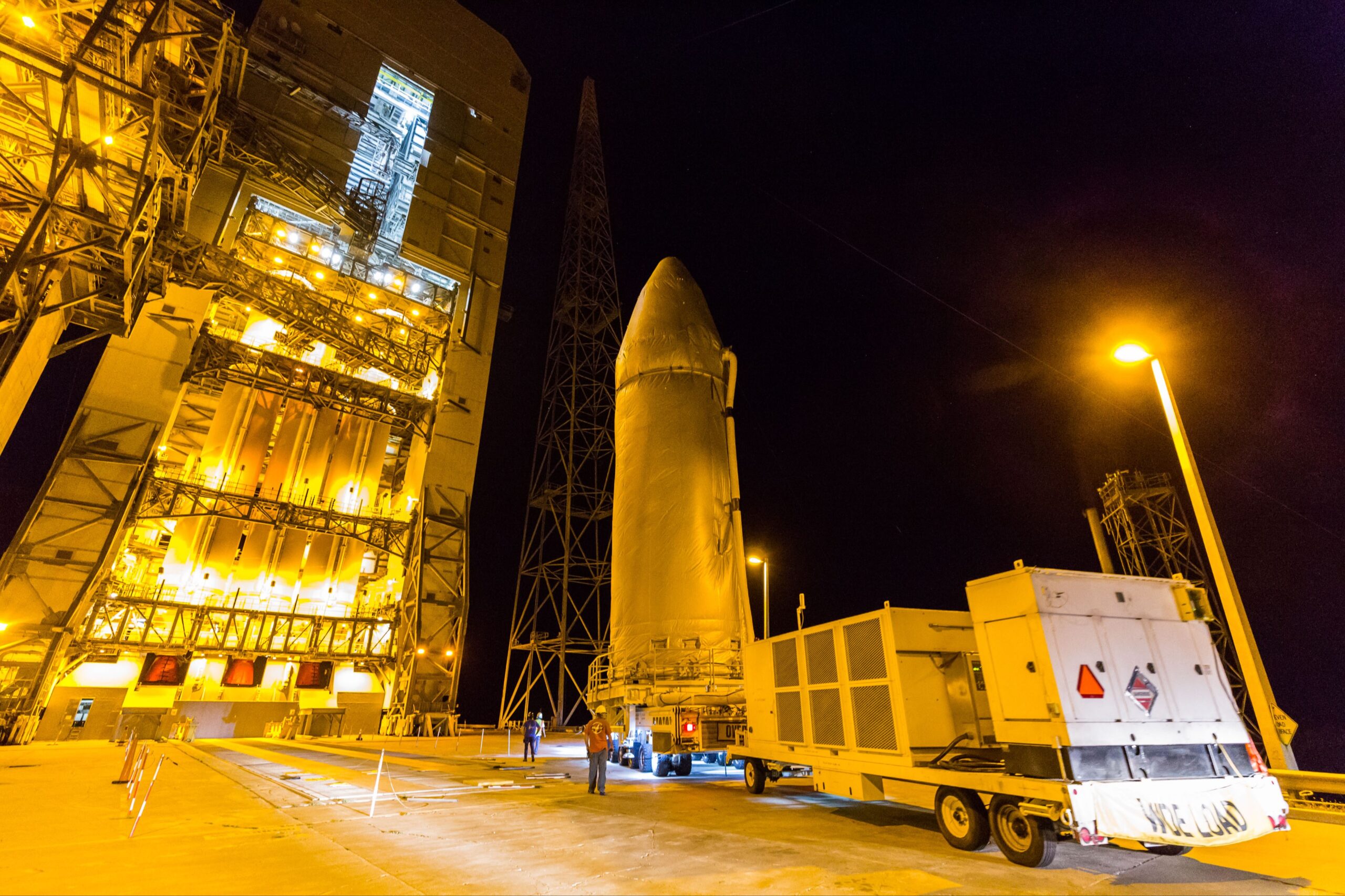
With three of those missions—NROL-44 in December 2020, NROL-82 in April 2021 and NROL-91 last September—satisfactorily completed, only two more sit on ULA’s books before the long-serving Heavy retires. After Wednesday’s launch of NROL-68, a final flight of the triple-barreled booster (and the final voyage of the Delta Family after more than six decades) is expected in the first quarter of 2024, carrying NROL-70.
Although shrouded in secrecy, the NROL-68 mission patch features an infant dragon, “symbolizing”, noted the NRO, “the birth of new capability in space”. The hatchling, it was added, “has its mother watching over it as it sets its eyes on first flight”. Tantalizingly, the patch also includes the Latin legend “Nusquam Celare”, or “Nowhere to Hide”.
With only NROL-70 out ahead on its horizon, the final curtain awaits for both the Heavy and the entire Delta Family. Wednesday’s mission marks the 388th total flight of a Delta-class vehicle since May 1960, as well as the 44th flight of a Delta IV vehicle and the 15th flight of the Delta IV Heavy configuration.
Since December 2004, a total of previous 14 Heavies have flown from the Cape or Vandenberg Space Force Base, Calif. Cargoes included ten highly classified NRO payloads, a Defense Support Program (DSP) infrared surveillance satellite, as well as NASA’s Parker Solar Probe and the Exploration Flight Test (EFT)-1 of the Orion spacecraft.





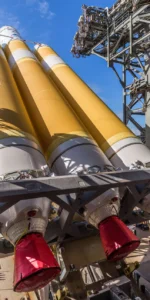
11 Comments
11 Pings & Trackbacks
Pingback:SpaceX Launches Indonesian Satellite, Weather 75% Favorable for Penultimate Delta IV Heavy
Pingback:SpaceX, ULA Launch Missions, 119 Minutes Apart - AmericaSpace
Pingback:SpaceX Rocks the Space Coast, Looks to Vandenberg Launch Later Tonight - AmericaSpace
Pingback:SpaceX Launches Indonesian Satellite, Weather 75% Favorable for ... - AmericaSpace - Digi90
Pingback:SpaceX Plans Back-to-Back Falcon 9 Missions, Six Hours Apart Tomorrow Night - AmericaSpace
Pingback:SpaceX Plans Back-to-Back Falcon 9 Missions, Six Hours Apart Tomorrow Night - SPACERFIT
Pingback:SpaceX, ULA Launch Missions, 119 Minutes Apart - AmericaSpace - Digi90
Pingback:Weather Favorable for Tonight’s Launch of 15x-Flown Falcon 9 - AmericaSpace
Pingback:Weather Favorable for Tonight’s Launch of 15x-Flown Falcon 9 - SPACERFIT
Pingback:Falcon 9 Flies, As SpaceX Heads for 10-Launch Month, 100-Launch Year - AmericaSpace
Pingback:Falcon 9 Flies, As SpaceX Heads for 10-Launch Month, 100-Launch Year - SPACERFIT